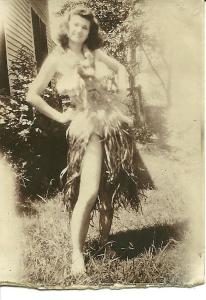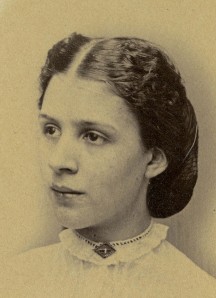
At the time of his death in 1904 several writers who had known Malcolm MacVicar recalled how he would ask, in his distinctive Scottish burr, "Am I understood?" The archivist would like to share some of his biography to make him understood by the Brockport of today, where a building is named after him.
Born in 1829 in Scotland, his family emigrated to Canada when he was a boy. As a young adult he worked as a carpenter in a shipyard in Cleveland, and then he went to Knox College in Toronto to become a Baptist minister. Instead of going to a church however, he came back to the U.S., and received a mathematics degree from the University of Rochester in 1859. After receiving his degree, he came to teach at the Brockport Collegiate Institute, as our school was known then.
In the 1860s he became principal of the school, which though successful academically was struggling financially. As a keen proponent of state support for teacher training MacVicar urged the state to set up a system of "Normal" schools, or teacher training schools, to better serve the educational needs of the state by providing professionally trained teachers, suggesting Brockport for this purpose. After a long and often difficult campaign MacVicar was successful, and the state set up not just one Normal school at Brockport, but several across the state, a forerunner of today's SUNY system.
After the struggle to see through the Normal school reform, MacVicar took a year off, and then became principal of the Potsdam Normal School. Having seen that school well on its way he returned to Canada where he taught at Toronto Baptist College. He so impressed the wealthy McMaster family there who were interested in the college with his integrity and abilities that when they put their fortune to work building McMaster University they insisted that MacVicar be the first chancellor.
He then in latter years moved on to become head of the missionary and educational efforts in the Reconstruction era South for the American Baptist Society , and oversaw the building of Virginia Union University (a historically black college in Richmond) during a part of its early development.
According to the reminiscences published at the time of his death and later, MacVicar could be something of the sterotypical stern, dour Scotsman. He did not suffer cheating or dishonesty of any sort, and held students accountable to strict rules. One former student wrote however of MacVicar's reproofs that "While such things sound severe to those who are dealt with so gently, we all found in Dr. MacVicar the kindest and gentlest of friends when we were in need of help or sympathy." Another student recalled that "Often did he converse with me on the question of my personal example and show me what I ought to be."
In 1905 the college received an oil portrait of Dr. MacVicar, which hangs today in a conference room in the Allen building. In the student publication "The Normalia" a writer observed of MacVicar that "He never was content to slide along and leave things as he found them... He was in perpetual conflict with human ignorance and prejudice, selfish interests and sodden conservatism."
 In doing some research on William Lennon, a science professor here for many years, and the man for whom Lennon Hall is named, the archivist ran across a piece in the local Brockport Republic from 1901 which mentioned that Professor Lennon had apparatus for wireless telegraphy equipment and was conducting some "interesting experiments." Wireless telegraphy was a forerunner in a way to radio; it involved sending Morse code wirelessly over the airwaves. Pictured here is Italian radio pioneer Marconi with some wireless telegraphy equipment of the same era as Professor Lennon.
In doing some research on William Lennon, a science professor here for many years, and the man for whom Lennon Hall is named, the archivist ran across a piece in the local Brockport Republic from 1901 which mentioned that Professor Lennon had apparatus for wireless telegraphy equipment and was conducting some "interesting experiments." Wireless telegraphy was a forerunner in a way to radio; it involved sending Morse code wirelessly over the airwaves. Pictured here is Italian radio pioneer Marconi with some wireless telegraphy equipment of the same era as Professor Lennon.


